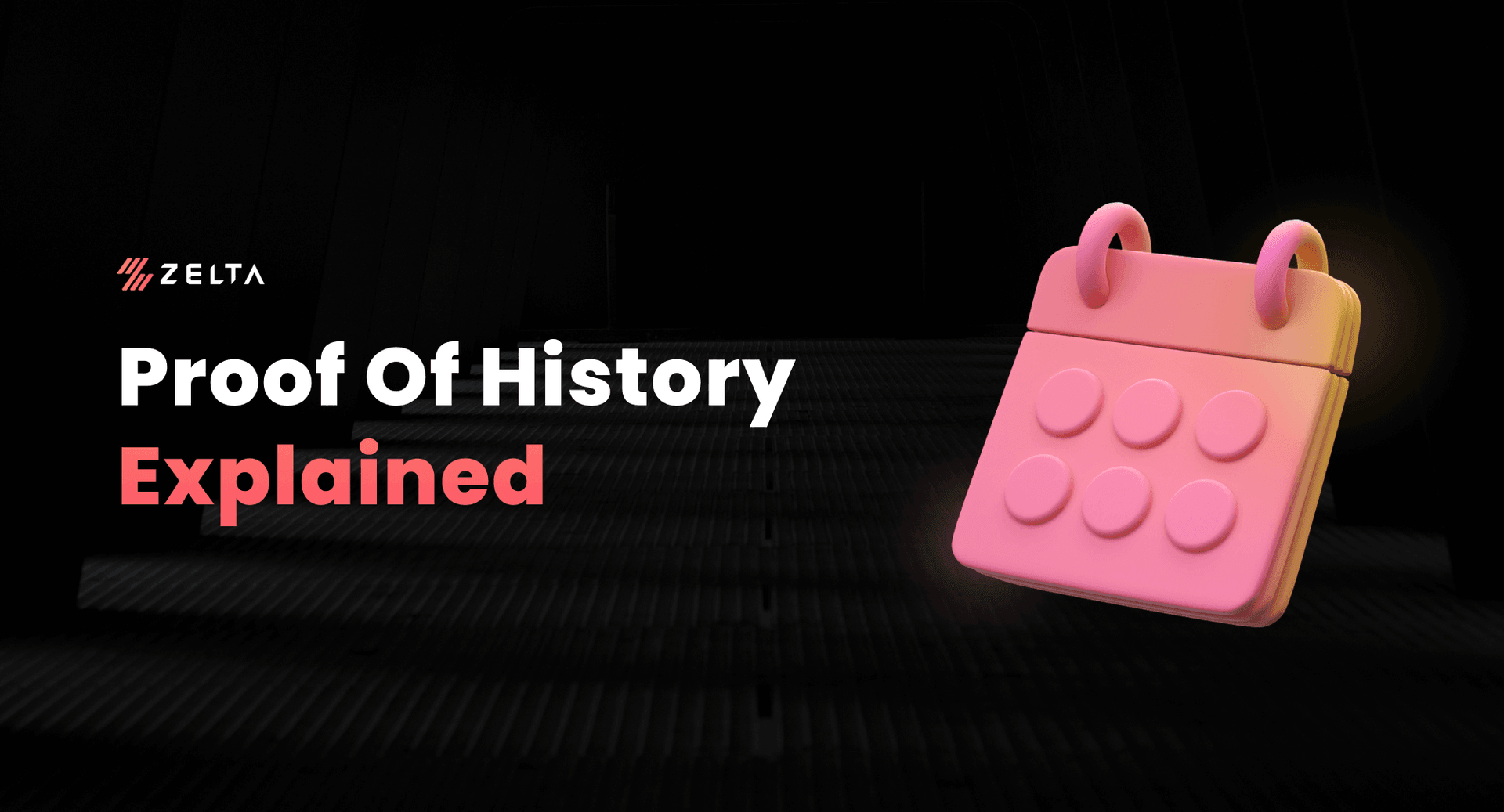

What is Proof Of History? An In-Depth Guide for Beginners
While Proof of Work (PoW) and Proof of Stake (PoS) consensus mechanisms continue to run the Bitcoin (BTC) and Ethereum (ETH) blockchains respectively, they too have their shortcomings.
Both proof of work and proof of work models are secure and decentralised but not scalable.
This poses an issue as the number of transactions per second (TPS) during high-load hours only slows down the entire process. Therefore to combat this issue a new consensus mechanism, Proof of History (PoH) was born.
What is Proof of History?
Just like other consensus mechanisms, Proof of History (PoH) is a consensus mechanism bringing in the unique element of ‘time.’ The fundamental technique of this mechanism is to integrate the element of time into the blockchain data.
Here everyone agrees on how the blockchain should be and this makes this mechanism faster and even cheaper.
Proof of History (PoH) makes use of timestamps to place specific dates and times on the blocks. This timestamp determines what kind of transaction took place from what block on a certain date.
In proof of work and proof of stake, one of the major problems is the agreement on time. Computers have to process ‘what time’ is it before finally being able to carry on the transaction.
The nodes (computers) have to communicate back and forth until they finally agree on a certain time before finally proceeding to solve the block.
While it may be a bunch of mathematical codes running together to solve the issue, the entire process is extremely time-consuming and therefore the number of transactions taken per second gets limited.
In Proof of History, the same is not the case.

Proof of History uses a very fast sequencing of validators while knowing their order without needing to communicate back and forth with other nodes. It essentially measures the total time elapsed between the passage of two different events.
The consensus mechanism has everyone timestamp their blocks and uses cryptographic proof to avoid waiting on everyone to agree on the time, thereby making the process faster.
Here everyone agrees on the organisation of the data on the blocks after the event (or fact) has occurred. There is essentially zero waiting time for other validators to check and approve the work that has been done. A process as simple as this increases the speed by a thousandfold!
Let us understand the working of the Proof of History consensus mechanism by a simple working example.
Suppose you want your family members to send you a package one day after the other. To start off this process you would first write to them asking for a package to be delivered and then they would oblige by sending the package via mail.
But the entire process would be too long and unorganised as a lot of the packages would be stuck in the mail for quite some time. Thus when you receive the packages you will have no idea what was supposed to come first and what last.
Now to tackle this you write to them again requesting a package delivery but this time you mention on what date they are supposed to send a package, eg. Aunt to send the package on January 1st, father to send the package on January 2nd etc. By doing so you have set up a schedule.
Obviously owing to the fact that not everyone lives equally far from you some packages will arrive early while some will arrive late but this time all the packages have the date and time of when they were sent.

Thus no matter in whatever order you receive the packages you can now set them up in the order in which they were sent thereby making the process much more organised. Proof of History uses the same analogy to solve a block.
It allows nodes to keep throwing a bunch of blocks at the validators and based on the difference in computing power some data of the block gets verified faster while some take a little more time.
The nodes (computers) assume that truth is being told by the other faster nodes and they in turn organise the blocks after getting the different data and then adding them to the blockchain. By doing so the process becomes scalable, secure and as it is on a blockchain it is also decentralised.
Use of Proof of History (PoH)
The Proof of History consensus mechanism is currently being used by Solana network in the circulation of their own crypto token SOL. Solana network runs on its own Solana blockchain and has a blocktime of only 400 milliseconds!
Moreover, Solana is built to handle over 700000 transactions per second, however, in practical use, the transactions have reached a maximum of 50,000 TPS and the speed of the network has not been tested beyond that.
This in no way means that the network cannot handle the higher speeds.

By implementing Proof of History Solana also has 25 blocks being validated by 25 people at once. For being a validator on the Solana network there are no requirements. All one needs to have is just a small amount of coins plus a fee to vote which presently sits at 1 sol per day.
Another thing which it uses is the sea level protocol, where Proof of History validators on the Solana network can run smart contract* codes in a parallel way.
Therefore multiple tasks can be done at the same time, in addition to that the network is not software based but hardware based.
Proof of History also finds its use in dApps (Decentralised Apps) for their functioning and development.
(*Smart contracts are highly complicated mathematical algorithms running the blockchain)
Solana smart contracts are based on rust programming language which is easy to learn and implement but it comes with its own disadvantages:
- Since the programming language is of a low level it takes more work to create things.
- The developers cannot copy-paste their projects on other repositories and everything needs to be written from scratch.
- Solana currently has about 1,200 validators to validate transactions on its network and this low number possesses centralisation concerns.
- Since the network has a low number of validators it has also fallen prey to hacks that have raised a security concern on the Proof of History model.
- Lesser number of dApps on the network account for more time being spent on their development and lesser on the blockchain.
In conclusion, the Proof of History model just like the other two dominating consensus mechanisms is not entirely perfect and has its own limitations. But it is a step towards something new and has held itself quite strongly despite the issues which as the time passes will be resolved leading to an even stronger model.
